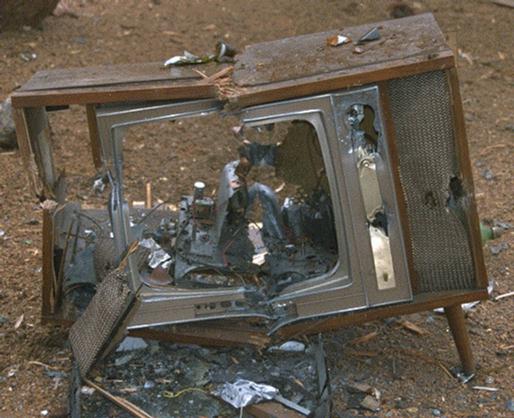According to a recent article at Cyberwise, only about 16% of teenagers say they watch any significant amount of live TV. They say that the programs are too long, that there are too many commercials, and that being in the room where the TV is doesn’t fit their lifestyle.
For someone in a generation that grew up on TV, that’s a pretty shocking statistic. Does this mean the end of live TV as we know it? Does it mean that the living room TV is already a dinosaur and that the companies that supply content are doomed to fail very soon?
Several “clickbaity” articles have claimed in the last month that live video, delivered to a television, only has about 3 years left. There have even been some prominent retired TV executives who have said this. But that seems like an awfully quick transition. We all know that the world changes quickly, but given that TV has been part of our lives for 75 years, should we expect it to disappear almost instantly?
Everyone’s going to have their opinions. Here’s mine.
Don’t count boomers out yet
Baby Boomers and Generation X define their lives by television. They’ll tell you what it was like when The Beatles were on The Ed Sullivan Show, what it was like watching the moon landing live on TV, and they’ll keep on telling you of news events and shared experiences that depend on television.
Television has shaped not only our experiences but our language. We’ve adopted slang from TV shows, over and over. Just choosing two examples, it would be hard to find a boomer or GenXer who doesn’t understand the social implications of “we were on a break” or “yada yada yada.” 20-30 years after airing, these bits of TV-inspired commentary still pop up in our speech.
The youngest member of Generation X was born in 1980, meaning that they are now about 43. The whole group is pretty much out of the vaunted 18-45 demographic. Advertisers love people 18-45 because they’re more inclined to spend money. But, as boomers age, they’ve continued to spend. In fact, the trend among boomers is to spend away their children’s inheritances rather than pass anything along.
Boomers and GenX love TV, and that’s going to keep TV going for a lot more than 3 years.
Short attention spans and tiny screens only work for the youngest of the young
Yes it’s true that if you’re under 25, you probably don’t want to sit still for a 30-60 minute TV show. You probably love watching videos on your phone, and the shorter the better. TikTok is full of videos under a minute that younger people consume avidly on their phones, and that’s not likely to change. The endorphin boost of seeing what you want to see and moving on is addictive to anyone in that group. When I was in that group, I felt the same way.
However, you can’t deny what happens when we age. We slow down. Our attention spans become longer. And, we get headaches when we look at tiny screens for too long. As millennials move into their 40s, this becomes an increasingly important point. Older eyes do a lot better when looking at a large screen from a distance. And, older people naturally lose patience with the constant adrenaline drive from short-form art. This is why older people have gravitated to longer stories and why many of the top performers on TV and streaming are serialized dramas.
It’s not all good news, though
Television is, by its nature, a passive medium. You sit there and watch what’s in front of you, when it’s presented. That model may not ever be as strong as it was in the 20th century. There’s still a place for live TV — there are plenty of events that we all want to experience at the same time. Whether it’s a national contest or sporting event or just something new dropping on streaming, we don’t want to be left behind. However, the days of passively staring at the same channel for hours are largely gone.
That doesn’t mean television as a whole will be gone, but it does mean a big change. It’s likely that we’ll see a continued shift to news and sports in local TV. National channels will have to evolve too, offering programming that’s instantly appealing instead of running the same show or movie several times a day.
There’s also the matter of commercials. A lot of young people will go to any length possible to avoid long commercial breaks. People tolerate commercials on streaming — it’s the largest growing segment of the streaming economy — but an hour of streaming typically has fewer than 8 minutes of commercials. An hour of traditional TV can have as many as 26 minutes of commercials. Ouch, right?
Some folks in the broadcast community think that people tune away from commercials because they’re uninteresting. I don’t think that’s completely true. I think people tune out because the breaks are too long. That has to change, period.
Here’s my prediction
I don’t think live TV is going anywhere. I think TV sales have probably peaked, and that’s ok. There’s still a place for a large TV in our lives, although it’s not the only place we’ll consume media. In fact, it’s not the only place we consume media now. As the millennial and GenZ generations age, they’ll want a more communal experience and a screen a little further from the eyes. This is natural. I believe TV will evolve to support those generations as well.
I’ve said several times over the years that there is too much repetition in national TV and there’s too many commercials. I do expect that as a result of consolidation, we’ll see fewer channels but the same amount of content or more. We just won’t see the same episode of House Hunters airing 15 times in the same week. There’s no need for something like that when you can stream it any time you want.
I am desperately hoping for some reform when it comes to commercials. There is too much promotion on live TV, from the long commercial breaks to the on-screen banners that seem almost constant on some shows. I expect commercial breaks to be shorter, but have the same number of commercials. How? The commercials get shorter. I expect commercials to resemble TikToks in the coming years, clocking in at 15 seconds with enough content to get you interested. Then, whether it’s an interactive on-screen button or a QR code or something, you’ll have the option to see more on your own screen if you’re interested.
National TV will continue to benefit from the ability to hyper-target customers and serve appropriate ads. This technology is supposed to come to broadcast as well, but I’m not sure what the timeframe will be. However, serving relevant ads — and serving the right number of them — is key. The 5-minute commercial break has to end, and soon. Any commercial break over 90 seconds is toxic to millennials and GenZ and broadcasters need to learn that lesson.
I, for one, welcome our new Alpha overlords
We don’t talk much about Generation Alpha, the generation after Generation Z. These are folks born after 2010, and they’re less likely to sit down and watch TV than even their older family members. Television needs to evolve quickly as the first Alpha joins that 18-45 demographic in just five years. Now’s the time. I really believe that TV will survive long after the generations that first embraced it stop watching. Broadcasters just need to start listening to what young people really want. Stop serving long breaks and repetitive programming. Innovate, and do it now while you’re still living off GenX and boomer ad dollars. Do it now.





